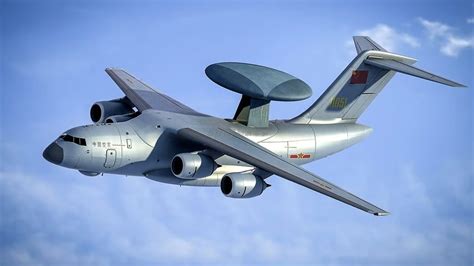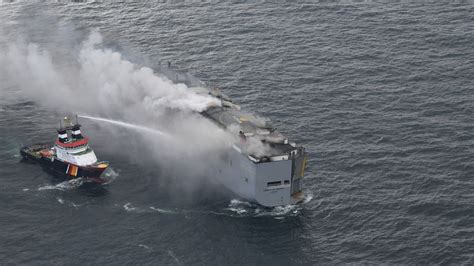
China’s latest KJ-3000 airborne early warning and control (AEW&C) aircraft, spotted in a recently surfaced image, showcases significant advancements in its radar technology and overall design, signaling a leap forward in China’s aerial surveillance capabilities.
The new KJ-3000 variant, identifiable by its upgraded radar system and refined airframe, suggests China is rapidly closing the technological gap with Western counterparts in AEW&C capabilities. According to defense analysts, this updated aircraft represents a crucial component of China’s integrated air defense system, extending its surveillance range and enhancing its ability to detect and track potential threats.
The image, circulating on social media and subsequently analyzed by military experts, reveals several key improvements over previous KJ-3000 models. Notably, the radar dome appears to be more streamlined, potentially reducing drag and improving aerodynamic performance. Analysts also suggest the radar system itself has been upgraded with advanced active electronically scanned array (AESA) technology, which offers superior detection range, tracking accuracy, and resistance to electronic countermeasures.
“The KJ-3000 is a critical asset for the PLA Air Force, providing enhanced situational awareness and extending the reach of its air defense network,” said a military analyst familiar with the program. “These upgrades suggest China is committed to maintaining a cutting-edge AEW&C capability.”
The deployment of the upgraded KJ-3000 comes amid rising tensions in the Indo-Pacific region, where China has been increasingly assertive in its territorial claims and military posture. The aircraft’s enhanced surveillance capabilities could provide China with a significant advantage in monitoring air and sea activity in contested areas such as the South China Sea and the Taiwan Strait.
The KJ-3000 is based on the Ilyushin Il-76 transport aircraft, a platform widely used by various countries for military and civilian purposes. China initially acquired Il-76 aircraft from Russia and subsequently developed its own AEW&C systems, integrating domestically produced radar and electronic warfare equipment. The development of the KJ-3000 represents a significant achievement for China’s defense industry, demonstrating its ability to design and manufacture sophisticated airborne surveillance platforms.
The implications of the upgraded KJ-3000 extend beyond regional security dynamics. The aircraft’s advanced radar technology could also be used for civilian applications such as disaster relief, environmental monitoring, and air traffic control. As China continues to modernize its military and expand its technological capabilities, the KJ-3000 is likely to play an increasingly important role in both military and civilian domains.
Further Details and Analysis:
The development of the KJ-3000 series has been a multi-stage process, reflecting China’s incremental advancements in radar technology and system integration. The initial KJ-2000 platform, also based on the Il-76, encountered some early challenges, particularly in sourcing reliable radar systems. China’s subsequent focus on indigenous development led to the KJ-3000, which incorporates more advanced and domestically produced components.
One of the key features of the upgraded KJ-3000 is its AESA radar. Unlike traditional mechanically scanned radars, AESA radars use multiple small antenna elements to transmit and receive signals, allowing for greater flexibility and precision in beam steering. This technology enables the radar to track multiple targets simultaneously, scan wider areas more quickly, and resist jamming attempts more effectively.
The AESA radar on the KJ-3000 is believed to operate in the S-band frequency, which offers a good balance between range, resolution, and atmospheric propagation. The radar is also likely to incorporate advanced signal processing techniques to filter out clutter and noise, improving its ability to detect small or stealthy targets.
In addition to its radar capabilities, the KJ-3000 is equipped with a comprehensive suite of electronic warfare systems, including electronic support measures (ESM) and electronic countermeasures (ECM). These systems allow the aircraft to detect and identify enemy radar signals, jam or disrupt enemy communications, and protect itself from missile attacks.
The KJ-3000 typically operates in conjunction with other military assets, such as fighter aircraft, bombers, and surface-to-air missile batteries. The aircraft’s radar data is transmitted to these assets via secure datalinks, providing them with a real-time picture of the battlespace. This networked approach to warfare allows for more coordinated and effective operations.
The deployment of the upgraded KJ-3000 is likely to have a significant impact on the balance of power in the Indo-Pacific region. The aircraft’s enhanced surveillance capabilities will give China a greater ability to monitor the activities of its neighbors, including the United States and its allies. This could lead to increased tensions and a greater risk of miscalculation or escalation.
However, some analysts argue that the KJ-3000 is primarily a defensive system, designed to protect China’s airspace and maritime interests. They point out that China has a legitimate need to defend itself against potential threats, and that the KJ-3000 is simply a tool for enhancing its self-defense capabilities.
Regardless of its intended purpose, the KJ-3000 is a powerful symbol of China’s growing military strength and technological prowess. The aircraft’s development demonstrates China’s commitment to modernizing its armed forces and becoming a major player on the world stage.
The specific enhancements observed in the recent image of the KJ-3000 provide valuable insights into the ongoing development of China’s AEW&C capabilities. The refined radar dome, for instance, is not merely an aesthetic improvement; it directly influences the aerodynamic properties of the aircraft and the performance of the radar system. A more streamlined dome reduces drag, allowing the aircraft to fly faster and more efficiently, while also potentially improving the radar’s field of view and reducing interference.
The upgrade to an AESA radar is a significant technological leap. AESA radars offer numerous advantages over traditional mechanically scanned radars, including:
- Improved Detection Range: AESA radars can transmit and receive signals over a wider range of frequencies, allowing them to detect targets at greater distances.
- Enhanced Tracking Accuracy: AESA radars can track multiple targets simultaneously with greater precision, making it easier to identify and intercept potential threats.
- Increased Resistance to Jamming: AESA radars are more resistant to electronic countermeasures, making it more difficult for enemies to disrupt their operation.
- Greater Flexibility: AESA radars can be programmed to perform a variety of tasks, such as air surveillance, maritime surveillance, and electronic warfare.
The integration of these advanced features into the KJ-3000 reflects China’s commitment to developing a world-class AEW&C capability. The aircraft is not only a valuable asset for the PLA Air Force, but also a symbol of China’s growing technological prowess.
Strategic Implications:
The deployment of the upgraded KJ-3000 has significant strategic implications for the Indo-Pacific region. The aircraft’s enhanced surveillance capabilities will give China a greater ability to monitor the activities of its neighbors, including the United States and its allies. This could lead to increased tensions and a greater risk of miscalculation or escalation.
Specifically, the KJ-3000 could be used to monitor air and sea activity in contested areas such as the South China Sea and the Taiwan Strait. China has been increasingly assertive in its territorial claims in these areas, and the KJ-3000 could be used to enforce these claims.
The KJ-3000 could also be used to track U.S. military aircraft and warships operating in the region. The United States has a strong military presence in the Indo-Pacific, and China is likely to view this presence as a threat to its security. The KJ-3000 could be used to gather intelligence on U.S. military activities and to develop strategies for countering U.S. power.
However, it is important to note that the KJ-3000 is not solely a tool for aggression. The aircraft could also be used for defensive purposes, such as protecting China’s airspace and maritime interests from attack. China has a legitimate need to defend itself against potential threats, and the KJ-3000 is simply a tool for enhancing its self-defense capabilities.
Ultimately, the impact of the upgraded KJ-3000 on the balance of power in the Indo-Pacific region will depend on how China chooses to use it. If China uses the aircraft responsibly and in accordance with international law, it could contribute to regional stability. However, if China uses the aircraft aggressively and to advance its territorial claims, it could lead to increased tensions and a greater risk of conflict.
Technological Context and Comparisons:
To fully appreciate the significance of the KJ-3000 upgrade, it’s crucial to understand the broader context of AEW&C technology and how it compares to similar systems operated by other countries. The United States, for example, operates the E-3 Sentry (AWACS) and the E-7 Wedgetail, both of which are highly advanced AEW&C platforms.
The E-3 Sentry, based on the Boeing 707 airframe, has been in service for decades and has undergone numerous upgrades to its radar and electronic systems. The E-7 Wedgetail, based on the Boeing 737 airframe, is a newer platform that incorporates advanced AESA radar technology.
Compared to these U.S. systems, the KJ-3000 is a relatively recent development. However, China has made significant strides in closing the technological gap. The upgrade to an AESA radar is a key step in this process, as it brings the KJ-3000 closer to the capabilities of the E-7 Wedgetail.
Other countries that operate AEW&C systems include Russia, India, and Israel. Russia’s A-50 Mainstay is a long-serving platform based on the Il-76 airframe, while India operates the EMB-145I Netra and the Boeing P-8I Poseidon, which are used for both maritime patrol and AEW&C missions. Israel’s IAI Elta EL/W-2085 is a highly advanced AEW&C system that is integrated into the Gulfstream G550 business jet.
The KJ-3000’s AESA radar likely shares some similarities with these other systems, but it also incorporates unique features that reflect China’s specific requirements and technological capabilities. The development of the KJ-3000 is a testament to China’s growing expertise in radar technology and system integration.
The radar technology used by the KJ-3000 is not just relevant for military applications. AESA radars can also be used for civilian purposes, such as air traffic control, weather forecasting, and disaster relief. The development of the KJ-3000 could therefore have broader implications for China’s technological development.
Future Developments:
The development of the KJ-3000 is likely to continue in the coming years. China is expected to continue to invest in improving the aircraft’s radar, electronic warfare, and communication systems. Future upgrades could include:
- Improved Radar Performance: China could develop more advanced AESA radar technology that offers greater range, resolution, and resistance to jamming.
- Enhanced Electronic Warfare Capabilities: China could integrate more sophisticated electronic warfare systems into the KJ-3000, allowing it to detect and disrupt enemy radar and communication systems more effectively.
- Advanced Data Processing and Fusion: China could develop more advanced data processing and fusion algorithms that allow the KJ-3000 to analyze and interpret radar data more quickly and accurately.
- Integration with Unmanned Systems: China could integrate the KJ-3000 with unmanned aerial vehicles (UAVs), allowing it to extend its surveillance range and gather intelligence in high-risk areas.
These future developments could further enhance the KJ-3000’s capabilities and solidify its position as a leading AEW&C platform. The aircraft is likely to remain a key component of China’s air defense system for many years to come.
Conclusion:
The upgraded KJ-3000 represents a significant advancement in China’s AEW&C capabilities. The aircraft’s enhanced radar technology, refined airframe, and comprehensive suite of electronic warfare systems make it a formidable asset for the PLA Air Force. The deployment of the KJ-3000 has significant strategic implications for the Indo-Pacific region, and its future development is likely to further enhance its capabilities. The KJ-3000 is not only a valuable tool for military operations, but also a symbol of China’s growing technological prowess. Its continued development will be closely watched by military analysts and policymakers around the world. The integration of advanced AESA radar technology and the overall advancements in the KJ-3000 platform highlight China’s determined pursuit of a modern and capable air force, equipped to address a wide range of security challenges. As China’s military modernization continues, the KJ-3000 will undoubtedly play a central role in shaping the regional security landscape.
Frequently Asked Questions (FAQ):
-
What is the KJ-3000?
- The KJ-3000 is China’s airborne early warning and control (AEW&C) aircraft, designed to provide long-range surveillance, air traffic control, and battle management capabilities. It is based on the Ilyushin Il-76 transport aircraft and equipped with a large radar dome that houses its radar system.
-
What are the key upgrades in the new KJ-3000 variant?
- The most significant upgrades include a refined radar dome, likely improving aerodynamic performance, and an advanced active electronically scanned array (AESA) radar system, offering superior detection range, tracking accuracy, and resistance to electronic countermeasures.
-
What is AESA radar technology and why is it important?
- AESA (Active Electronically Scanned Array) radar uses multiple small antenna elements to transmit and receive signals, enabling greater flexibility in beam steering, simultaneous tracking of multiple targets, wider area scanning, and increased resistance to jamming. This technology significantly enhances the aircraft’s surveillance and detection capabilities.
-
What is the strategic importance of the KJ-3000 in the Indo-Pacific region?
- The KJ-3000 enhances China’s ability to monitor air and sea activity in the Indo-Pacific region, including contested areas like the South China Sea and the Taiwan Strait. It provides improved situational awareness and extends the reach of China’s air defense network, potentially impacting the regional balance of power.
-
How does the KJ-3000 compare to other AEW&C aircraft operated by other countries?
- While countries like the United States operate advanced AEW&C platforms such as the E-3 Sentry and E-7 Wedgetail, the KJ-3000 represents China’s efforts to close the technological gap. The upgraded AESA radar brings the KJ-3000 closer to the capabilities of systems like the E-7, showcasing China’s advancements in radar technology and system integration.









